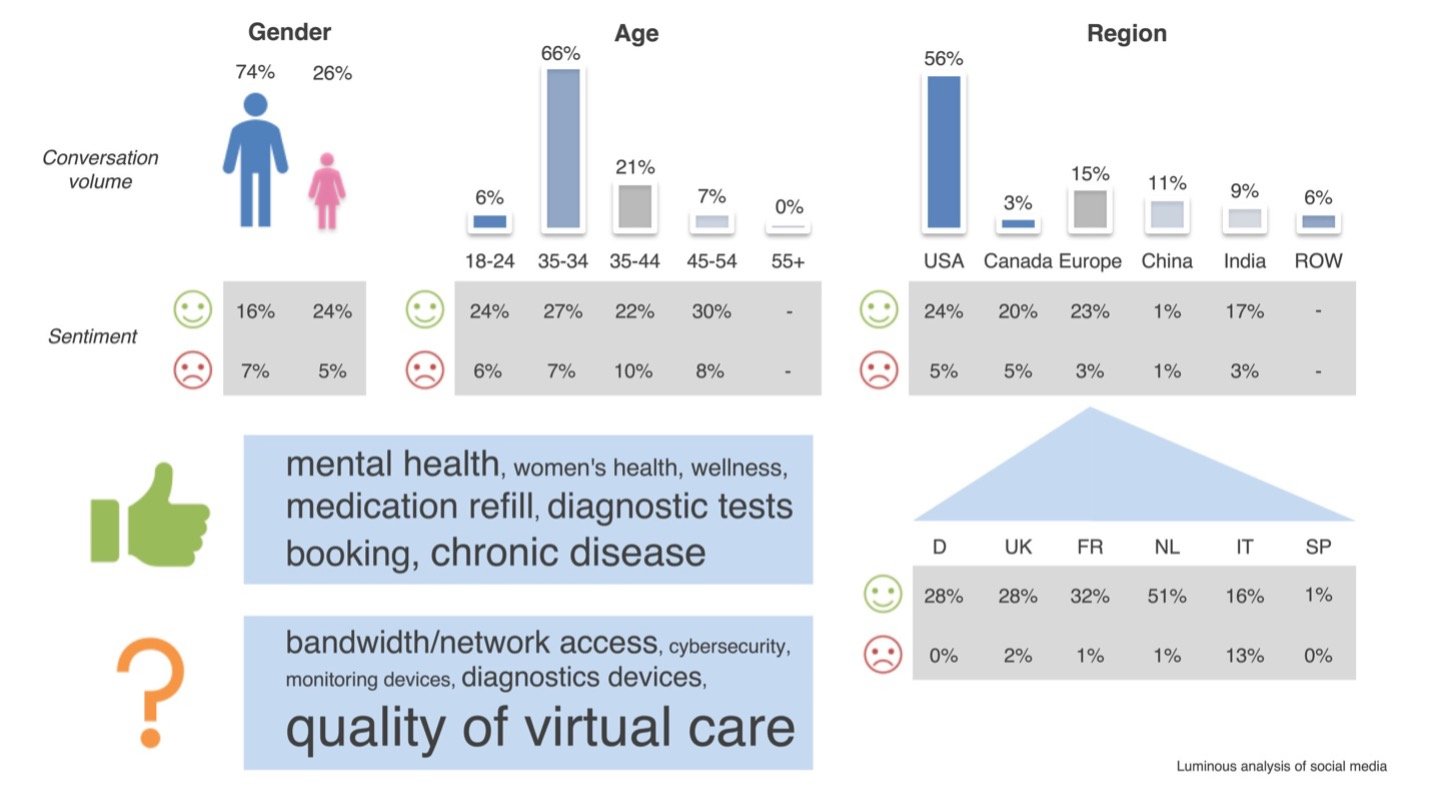Consumer Sentiment About Telemedicine
While COVID-19 has triggered the use of telemedicine seemingly overnight, it remains unclear how sustained adoption will be.
To understand more about its potential, the Luminous team took a look at the social media discourse around telemedicine.
On average, sentiment is positive (20% positive, 5% negative), indicating that there is enthusiasm for telemedicine (see graphic below).
While males represent 3/4 of the conversations, they tend to be less positive than women (positive/negative ratio is 2.3 for men and 4.8 for women).
Adults 25-45 account for 87% of the telemedicine conversation, with younger adults, aged 25-35, representing 2/3 of the total. Adults 35-45 are the least positive age group (positive/negative ratio is 2.2 compared with an average of 4.0).
Americans, Canadians, and Indians view telemedicine mostly as positive. Northern Europeans are very positive (Germans, French, British, and Dutch), while southern Europeans appear neutral to undecided (Spanish are neutral and Italians have both high positive and high negative). Chinese appear to be neutral (we can only assess Chinese participation to international social media).
Americans dominate the conversation (56%), followed by Europeans (15%) and Chinese (11%).
Conversations around reimbursement, government, and insurance endorsement remain critical to all demographics and are significant determinants of sentiment.
Questions endure about bandwidth/network access, cybersecurity, availability of monitoring and diagnostics devices, and evidence of the quality of virtual care.
It is favorably viewed for mental health, women's health, wellness, medication refill, chronic disease management, and booking diagnostic tests.
With enthusiasm from consumers, what will it take for providers and payers to jump on board?
By putting the Spotlight on patients, Luminous can help understand and map the path to adoption of new digital health technologies and the role of telemedicine.

